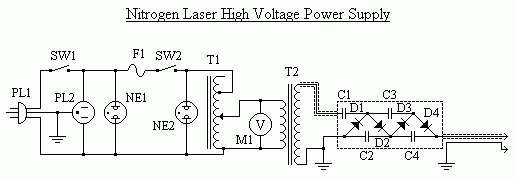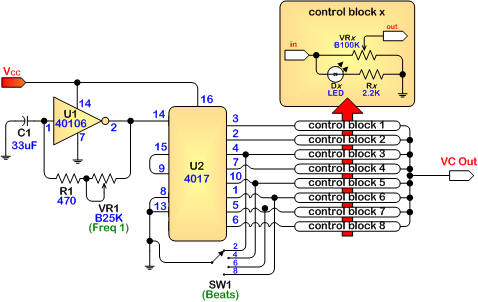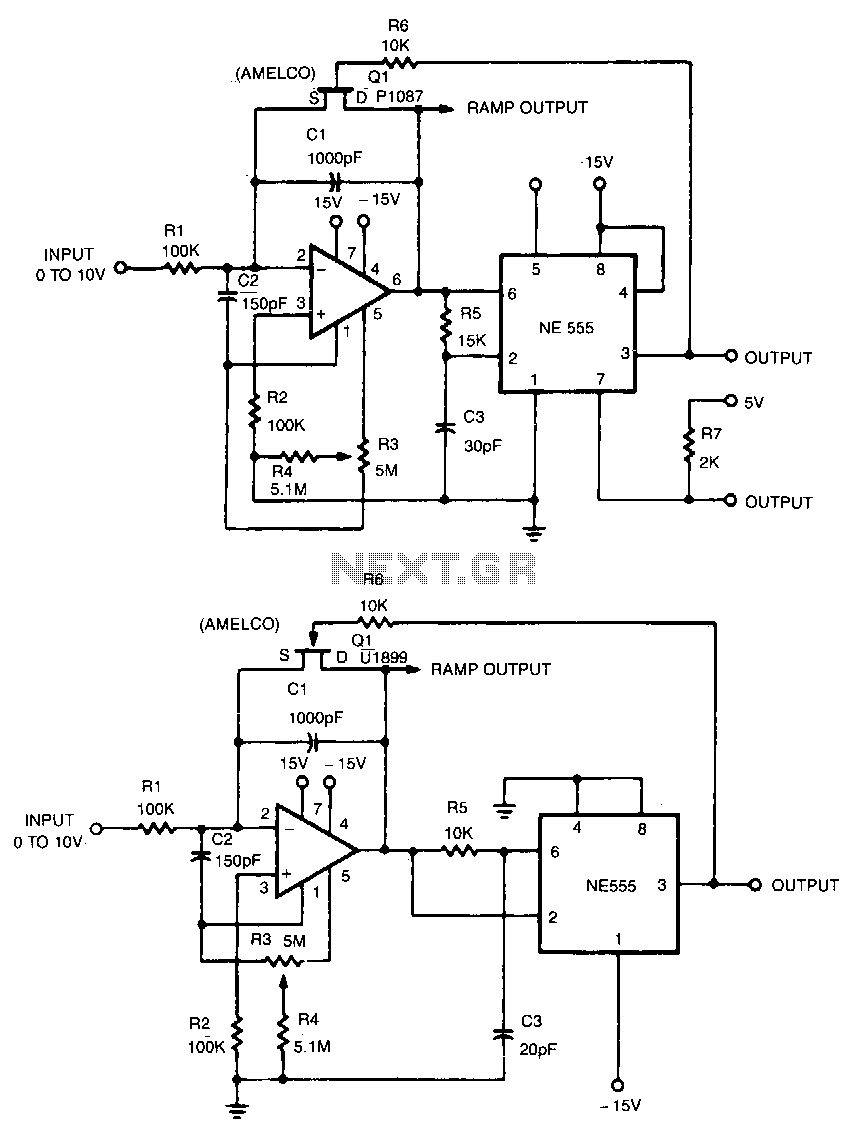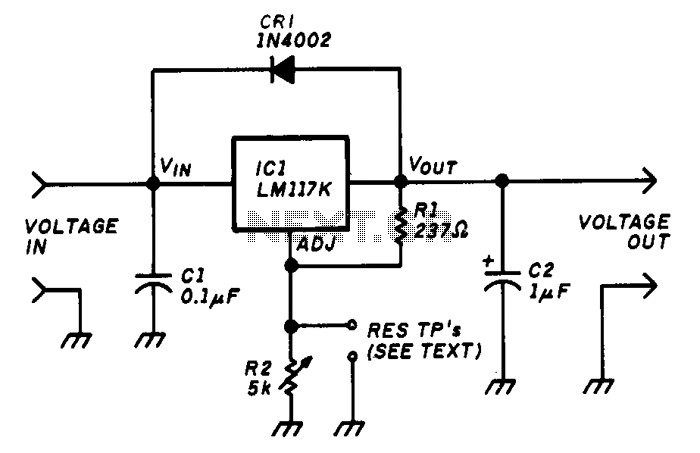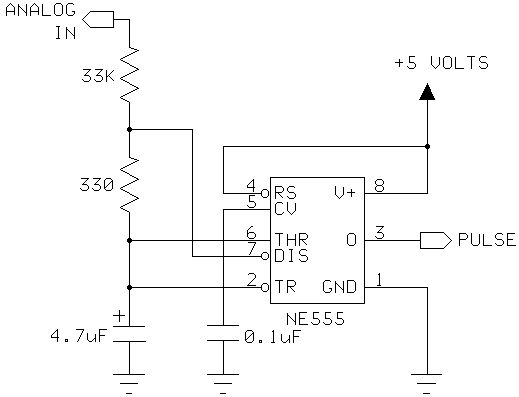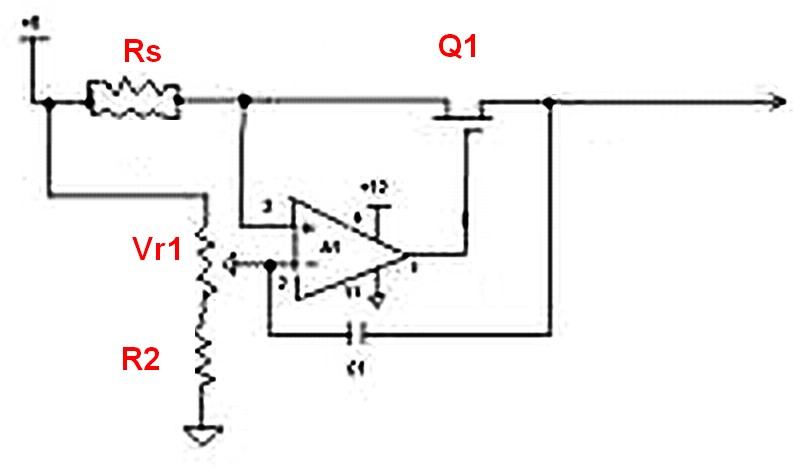
Frequency-to-volt age converter
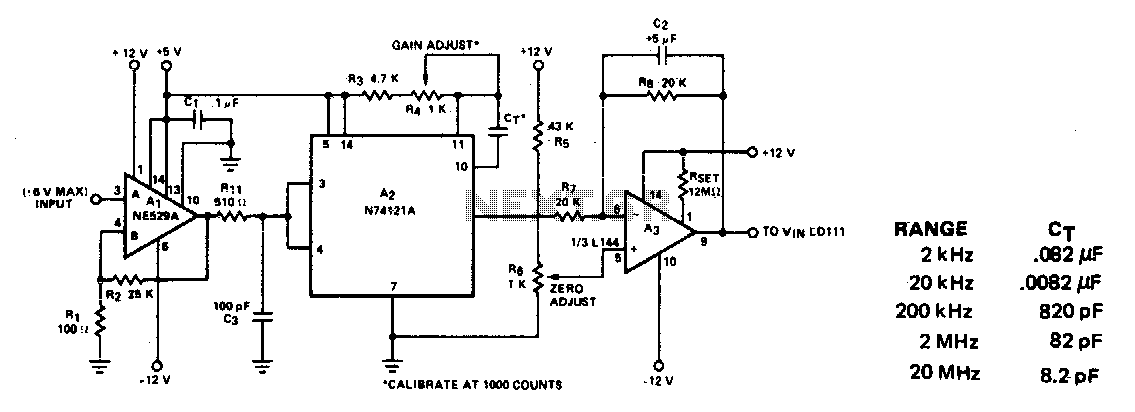
This circuit converts frequency to voltage by taking the average DC value of the pulses from the 74121 monostable multivibrator. The one-shot is triggered by the positive-going AC signal at the input of the 529 comparator. The amplifier acts as a DC filter and also provides zeroing. The accuracy is 2% over a 5-decade range. The input signal to the comparator should be greater than 0 volts peak-to-peak and less than 12 volts peak-to-peak for proper operation.
The circuit utilizes a 74121 monostable multivibrator, which generates a pulse output in response to a triggering signal. In this design, the triggering signal is derived from an AC waveform, which must exceed 0 volts and remain below 12 volts peak-to-peak to ensure reliable operation. The output of the monostable multivibrator is a series of pulses whose frequency corresponds to the frequency of the input AC signal.
These pulses are then processed to obtain an average DC voltage, which represents the frequency of the input signal. The 529 comparator serves as the initial stage for frequency detection, converting the AC input into a suitable trigger for the monostable multivibrator. The output from the monostable multivibrator is then fed into a DC filtering amplifier.
The filtering amplifier is crucial for smoothing out the pulse train generated by the monostable multivibrator, effectively converting the varying pulse width into a stable DC level. This stage also features a zeroing capability, allowing for calibration and adjustment of the output voltage to enhance accuracy. The overall accuracy of the circuit is specified as 2% across a range of five decades, indicating its versatility and reliability in various applications.
It is essential to ensure that the input signal remains within the specified voltage range to maintain the integrity of the frequency-to-voltage conversion process. The design can be utilized in various applications, including frequency measurement systems, signal processing, and other electronic instrumentation where frequency-to-voltage conversion is required.This circuit converts frequency to voltage by taking the average dc value of the pulses from the 74121 monostable multivibrator. The one shot is triggered by the positive-going ac signal at the input of the 529 comparator. The amplifier acts as a dc filter, and also provides zeroing. The accuracy is 2% over a 5 decade range The input signal to the comparator should Jbe greater than 0 volt peak-to-peak, and less than 12 volts peak-to-peak for proper operation. 🔗 External reference
The circuit utilizes a 74121 monostable multivibrator, which generates a pulse output in response to a triggering signal. In this design, the triggering signal is derived from an AC waveform, which must exceed 0 volts and remain below 12 volts peak-to-peak to ensure reliable operation. The output of the monostable multivibrator is a series of pulses whose frequency corresponds to the frequency of the input AC signal.
These pulses are then processed to obtain an average DC voltage, which represents the frequency of the input signal. The 529 comparator serves as the initial stage for frequency detection, converting the AC input into a suitable trigger for the monostable multivibrator. The output from the monostable multivibrator is then fed into a DC filtering amplifier.
The filtering amplifier is crucial for smoothing out the pulse train generated by the monostable multivibrator, effectively converting the varying pulse width into a stable DC level. This stage also features a zeroing capability, allowing for calibration and adjustment of the output voltage to enhance accuracy. The overall accuracy of the circuit is specified as 2% across a range of five decades, indicating its versatility and reliability in various applications.
It is essential to ensure that the input signal remains within the specified voltage range to maintain the integrity of the frequency-to-voltage conversion process. The design can be utilized in various applications, including frequency measurement systems, signal processing, and other electronic instrumentation where frequency-to-voltage conversion is required.This circuit converts frequency to voltage by taking the average dc value of the pulses from the 74121 monostable multivibrator. The one shot is triggered by the positive-going ac signal at the input of the 529 comparator. The amplifier acts as a dc filter, and also provides zeroing. The accuracy is 2% over a 5 decade range The input signal to the comparator should Jbe greater than 0 volt peak-to-peak, and less than 12 volts peak-to-peak for proper operation. 🔗 External reference
